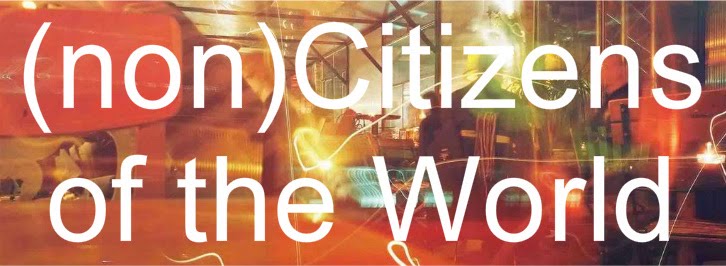The last post discussed the 1951 Convention and its "membership in a particular social group" clause, concluding that this is most likely the best fit for LGBQT asylum claims, and was perhaps even contemplated as such by Convention drafters. In this installment, we'll review some important case law where states used the clause to grant protection to applicants.
In Acosta, a 36 year old Salvadorian man requested leave to remain in the USA during a deportation hearing, applying for asylum. The Judge denied in the first instance, stating that he had failed to meet the burden of proof for his claim, and he appealed to the BIA (Board of Immigration Appeals.) His argument rested on the fact that he was a member of a group of Taxi drivers that was being harassed by anti-government guerillas, whom eventually directly threatened his life. The Court had to address: does this count as a "social group"?
The BIA held that members of particular social group
usually share a “common, immutable characteristic” or sometimes a “shared past
experience.”
More to the point, the Court held that the common characteristic “must be one
that the members of the groups either
cannot change or should not be
required to change because it is fundamental to their individual identities
or consciences.” (emphasis mine)
Although not meant to address LGBQT concerns, this definition (the "immutable" principle) is useful because it accommodates much of the
debate surrounding sexual orientation. Although it is increasingly believed
that sexual orientation is an innate characteristic that cannot be altered by, for example,
religious conversion or therapy, it is all the same problematic to sweep out
individuals who may feel that their sexual behavior is a choice, but one that
is an essential part of their identity. This definition helpfully
leaves the debate out of the question by including characteristics that,
regardless of their immutability, should not be forcibly eradicated.
Unfortunately, it also leaves the door open for Judges to opine that sexuality is something that both can and should be changed by the applicant. And in the US, this opinion is unfortunately not so uncommon.
Not Gay Enough for the USA
Another big problem with the US asylum scheme for LGBQR applicants is covered in Deborah Morgan’s article "Not Gay Enough for the Government: Racial and Sexual Stereotypes in Sexual Orientation Asylum Cases" (2006) . Morgan focuses on a United States asylum case that pointed out some of the flaws of the immigration system when dealing with an applicant that did not fit into preconceived sexual orientation notions.
In the Mohammed case, the asylum seeker was a gay Iranian man seeking asylum in the United States after many years of sexual abuse, discovery by the Iranian government (who sometimes punishes homosexuality with death) and further abuse and disownment by his family. He filed an asylum claim in the United States, and went through the standard interviews and procedures that accompany the asylum process there. However, “Mohammed” had a problem: he did not have sufficient evidence of his sexual orientation. He did not appear “feminine, ” was not openly “out” in the United States where he lived with his Iranian-American partner, and did not have evidence of any of his participation in activities that would have confirmed his identity, such as “participation in gay pride parades.” (Yes, seriously.) The immigration judge concluded that, “Mohammed was able to hide his sexual orientation well enough to pass as a heterosexual, therefore upon returning to the Iran he could do the same and not have any further problems.” Unfortunately, this case is just one of many where asylum was denied because of person’s perceived ability to pass or non-demonstration of gay stereotypes.
Not only is this standard absurdly unfair, it also goes far beyond what is required by the 1951 Convention. The Convention requires a nexus between an individual’s membership in a particular social group and his reasonable fear of persecution. Why should it be necessary, then, to match the certain characteristics that this social group might have in the receiving country? An analogous situation would be the Court requiring a person fleeing persecution based on their religious identity to demonstrate that they live out their religion in the receiving country in the same way as other members of that religion do in that country. This additional hardship is likely to cause problems for people coming from non-Western countries, where the LGBT lifestyle is lived very differently.
In sum, the US has some excellent and broadly useful case law on social group membership that can be very beneficial for LGBQT asylum claimants. On the other hand, the perceptions and stereotypes of individual Judges reflect the same ones of the rest of the society, and can unfortunately present a significant obstacle for individuals from non-Western countries.
For more on Acosta, see: Susan B. Goldberg. Give Me Liberty or Give Me Death: Political Asylum and the Global Persecution of Lesbians and Gay Men. 26 Cornell Int’L L. J. 605, 613-615. (1993).
For more on LGBQT Asylum claims in the USA, see: The Difficulties of US Asylum Claims based on Sexual Orientation, Swetha Sridharan, via MPI.

